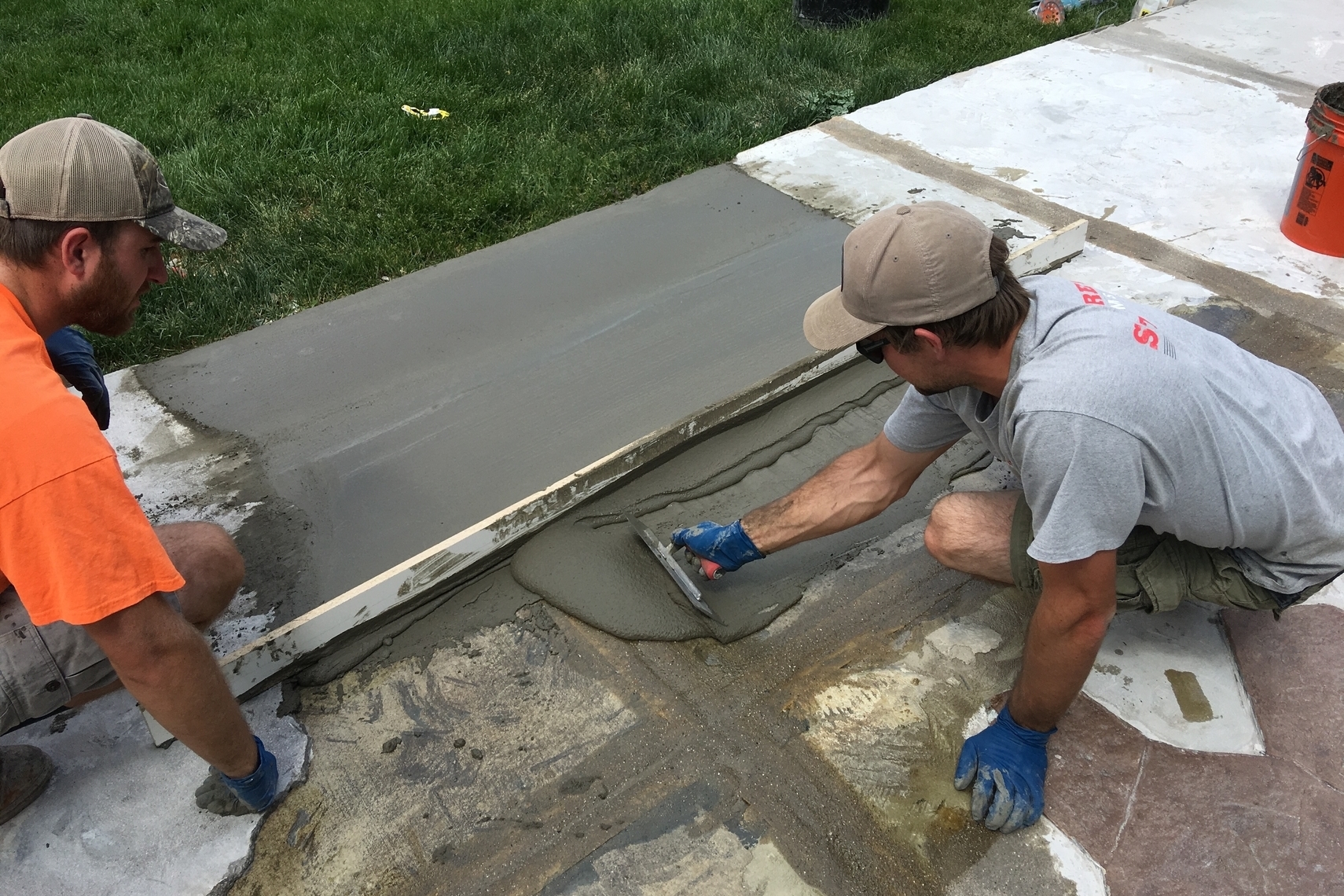There are many options and methods for resurfacing concrete. Sometimes, deciding on the appropriate way to do it is overwhelming.
That’s why we’re here to walk you through the process. Continue reading to learn about the right way to resurface a concrete floor! Learn more here about polyurea garage floor coatings.
Choosing a Resurfacing Option
There is a wide variety of resurfacing options on the market today. Some of these include smooth concrete overlays, concrete pavers, stamped concrete overlays, SUNDEK coatings, and acrylic paint. Each material has its own benefits and design options, so deciding on the best one for you is merely personal preference.
Smooth Concrete Overlays

Smooth concrete overlays apply a new layer of concrete over your existing floor to restore it to a like-new appearance. From there, you can use a stain, install a scored pattern, and more!
Concrete Pavers
Concrete pavers come in a myriad of shapes, sizes, and colors. Virtually any design can be accomplished having your concrete floor resurfaced with these versatile blocks.
Stamped Concrete Overlays

Stamped concrete overlays are a highly popular resurfacing method. This overlay is applied thicker than most to accommodate the stamped pattern, from cobblestone or flagstone to brick or even wood.
SUNDEK Coatings
SUNDEK coatings are extremely popular with concrete floors that will be exposed to sunlight and concrete pool decks. These coatings resist the heat that is usually absorbed by standard concrete to create a cooler surface.
Acrylic Paint
Acrylic paint is one of the most affordable methods for resurfacing a concrete floor. This concrete paint is available in a broad assortment of colors and finishes to suit any design scheme. However, it’s not as long-lasting as other resurfacing options.
Once you’ve decided on which resurfacing option is right for you, it’s time to move on to having your concrete resurfaced.
Prepping the Surface
The first step in concrete resurfacing will be prep work. Your concrete needs to be cleaned and inspected for damage. If any damage is present, it will need to be repaired before moving forward.
Cracks will need to be filled with an injectable epoxy that will prevent them from spreading. Any chipping or pits will need to be patched to stop the damage from getting worse.
Once repairs are complete, the surface will need to be ground with a floor grinder, usually fitted with a diamond wheel. This ensures proper adhesion between the concrete and the resurfacing material. After the grinding is complete, the floor needs cleaning again, and then the resurfacing material can be applied.
Applying the Resurfacing Material

This step can vary depending on what resurfacing material you’ve chosen, but let’s take a look at the most popular: Stamped Concrete Overlays.
The overlay material will be mixed and spread across the entirety of the floor using specialized tools. Once it begins to set up, The stamp that you’ve chosen will be applied to start at one end of the floor working towards the other end.
Once the stamped pattern is in place, the concrete overlay will need to cure. Cure times can vary depending on the weather, airflow to the floor, and temperature. On average, a stamped concrete overlay will need 24 hours to cure for foot traffic and 72 hours for vehicle traffic. Once dry, these overlays can also be stained to create a more realistic appearance.
DIY or Hire a Contractor?

Many homeowners around the country like to tackle DIY projects around the house. However, when it comes to concrete projects, such as concrete resurfacing in Brisbane, it’s typically a task best entrusted to the professionals.
A concrete resurfacing project requires close attention to detail and care. Even a minor mistake can result in costly repairs or force you to start the project over from the beginning.
A professional will come equipped with all of the tools and equipment needed to handle your project quickly and correctly. If you want to resurface your concrete floor, we highly recommend hiring a concrete contractor.
Finishing Up
Resurfacing a concrete floor can be an affordable alternative to having it replaced. Take your time deciding on which resurfacing option is best for you. Concrete resurfacing is an intricate process with many time-sensitive steps. It’s best to hire a professional to handle this project. Keep in mind, if your concrete is extensively damaged, resurfacing may not be the best option for you, though this is rare. Now, you should have all the info to resurface your concrete, the right way!






